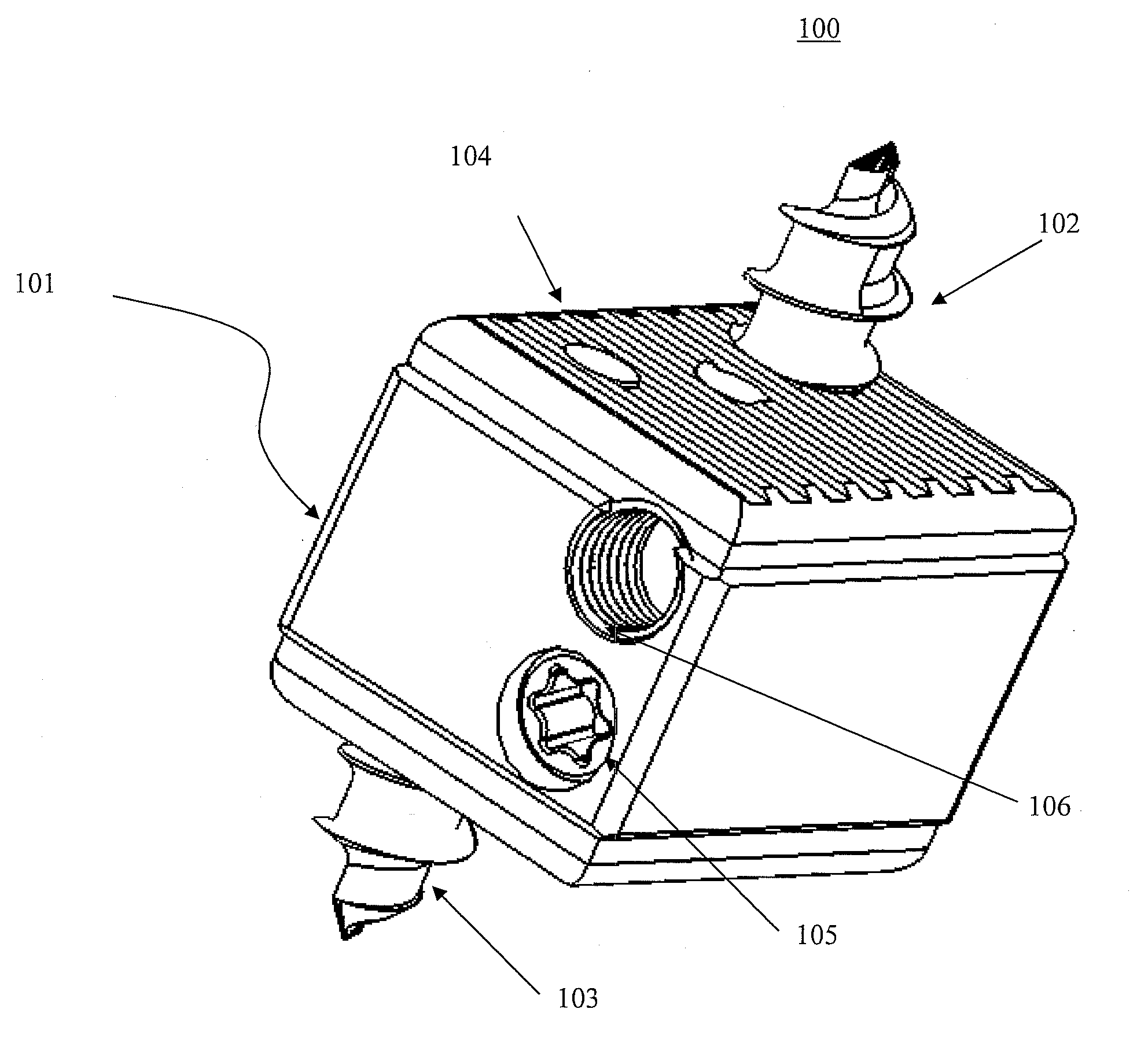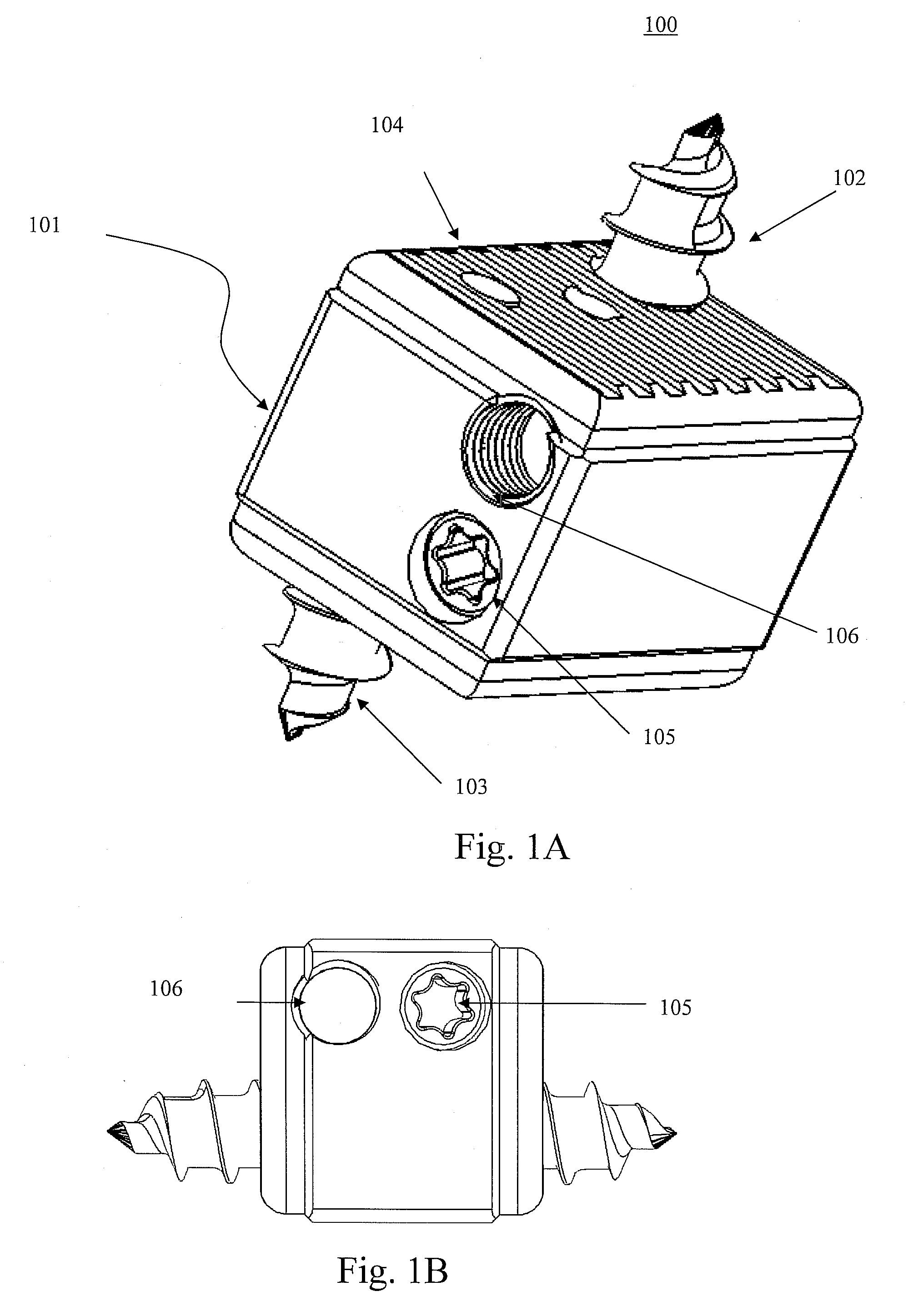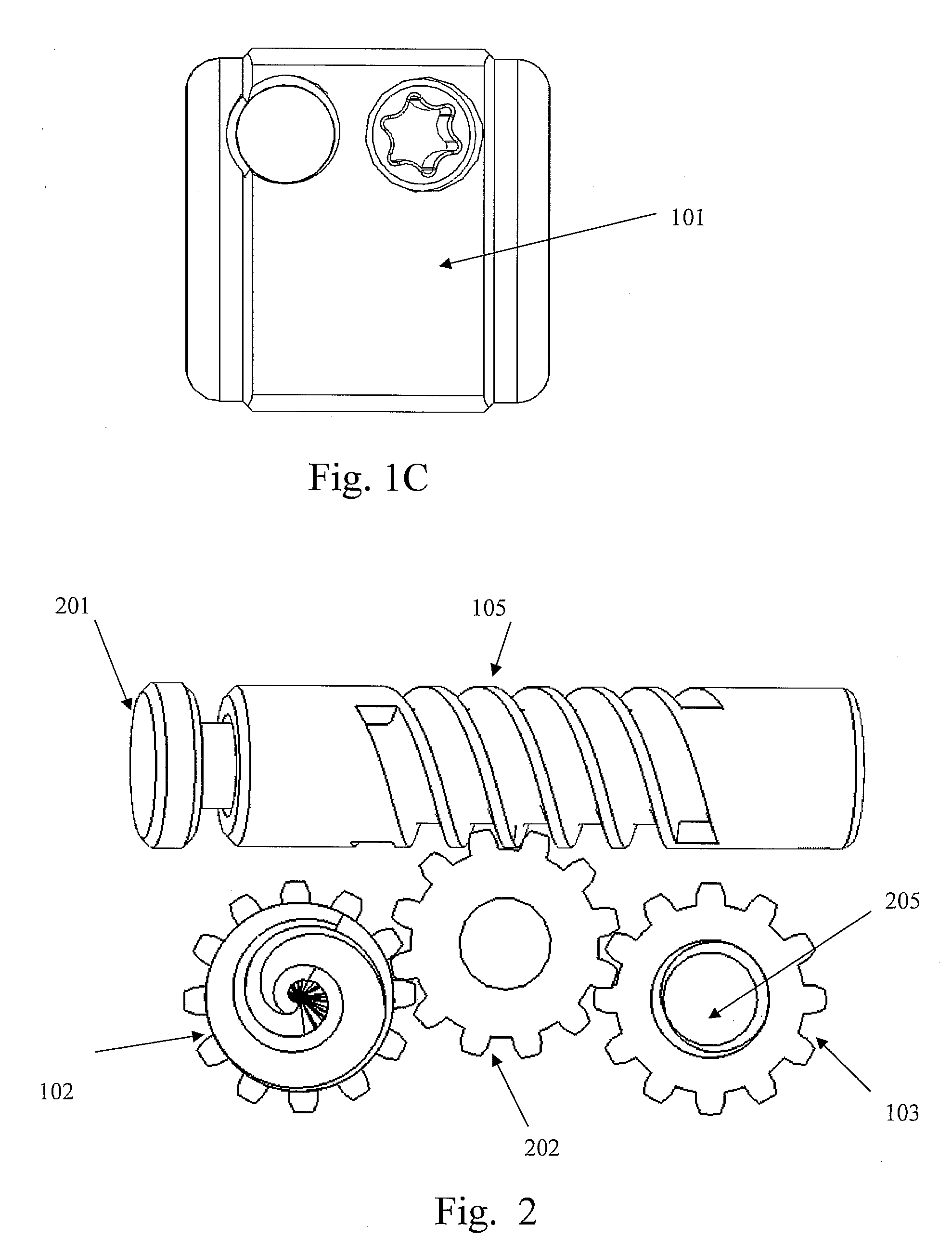Bi-directional fixating transvertebral body screws, zero-profile horizontal intervertebral miniplates, total intervertebral body fusion devices, and posterior motion-calibrating interarticulating joint stapling device for spinal fusion
a transvertebral body and screw technology, applied in the field of unique universal bidirectional screw system, can solve the problems of pseudoarthrose, prolonged recovery, excessive blood loss, etc., and achieve the effect of increasing the rostral and caudal segmental stress, facilitating strong solid fusion, and increasing the rate of re-operation
- Summary
- Abstract
- Description
- Claims
- Application Information
AI Technical Summary
Benefits of technology
Problems solved by technology
Method used
Image
Examples
Embodiment Construction
1. The Medical Device
[0038] Referring to FIGS. 1A-5C the above described problem can be solved in the cervical, thoracic and lumbar spine by insertion into the denuded intervertebral disc space a bidirectional fixating transvertebral (BDFT) screw or (UBS) screws 100.
[0039]FIGS. 1A through 1C illustrate three-dimensional views of the UBS / BDFT screw 100. All its inner components are in the gear box casing 101. The internal mechanisms are illustrated in FIGS. 2-5C. FIG. 1A illustrates the isometric view of the UBS 100 showing the outer gear box 101 containing the external mechanism, with superior screw 102 and inferior screw 103 extended. There are serrations 104 on the superior and inferior surfaces of the box 101 intended to integrate with the surface of the superior and inferior vertebral body surfaces. The gear box 101 which is made either of PEEK (polyethylene-ketol) or titanium acts as a column preventing subsidence of the disc space. Also seen are the surface of the worm driv...
PUM
 Login to View More
Login to View More Abstract
Description
Claims
Application Information
 Login to View More
Login to View More - R&D
- Intellectual Property
- Life Sciences
- Materials
- Tech Scout
- Unparalleled Data Quality
- Higher Quality Content
- 60% Fewer Hallucinations
Browse by: Latest US Patents, China's latest patents, Technical Efficacy Thesaurus, Application Domain, Technology Topic, Popular Technical Reports.
© 2025 PatSnap. All rights reserved.Legal|Privacy policy|Modern Slavery Act Transparency Statement|Sitemap|About US| Contact US: help@patsnap.com



